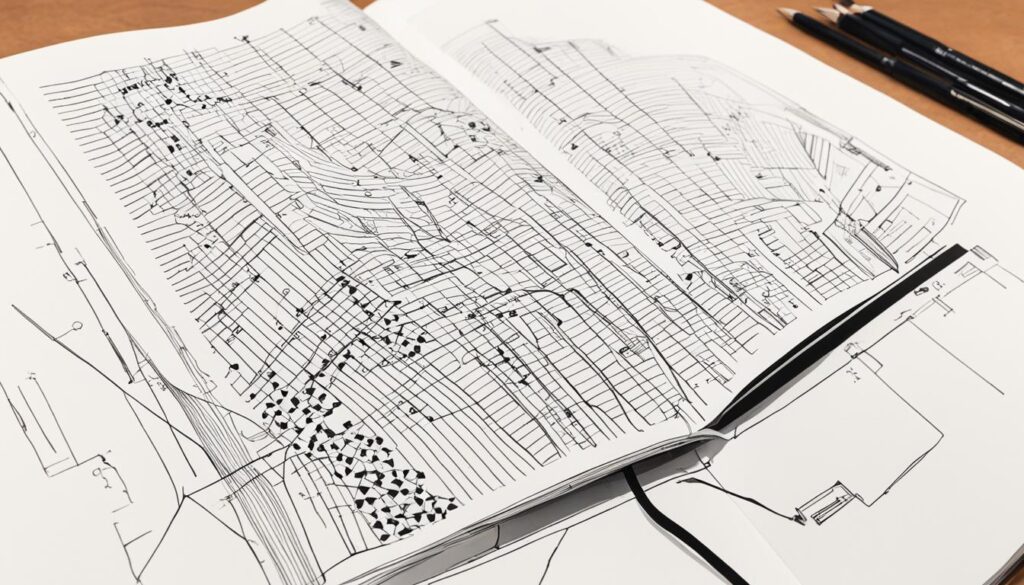If you are interested in design, usability and human interaction, “The Design of Everyday Things” by Donald A. Norman is a must-read. This audiobook review will provide you with a detailed analysis of the key concepts and ideas presented, exploring the practical application of Norman’s principles and its impact on the design industry. Whether you are a designer, product developer or simply interested in everyday design, this audiobook is bound to provide you with valuable insights and new perspectives. Let’s dive into the world of “The Design of Everyday Things” and explore its many benefits together.
About the Author
Donald A. Norman is an American researcher, professor, and writer who specializes in cognitive science, design, and usability engineering.
With a Ph.D. in Psychology from the University of Pennsylvania, Norman has held various academic positions at prestigious institutions such as Harvard University and the University of California, San Diego. He is also a co-founder of the Nielsen Norman Group, a user experience consulting firm.
Norman is the author of several significant works in the fields of design and user experience, including “The Design of Everyday Things,” “Emotional Design,” and “Living with Complexity.” He is known for his human-centered approach to design and his advocacy for creating products and systems that are intuitive, efficient, and enjoyable to use.
“The Design of Everyday Things” is one of Norman’s most notable works, which has influenced designers, engineers, and businesses around the world.
Book Overview
Donald A. Norman’s “The Design of Everyday Things” is a seminal work that explores the fundamental principles of good design in everyday objects and technology.
The book, first published in 1988 and updated in 2013, emphasizes the need for usability and user-centered design in creating products that work well and are easy to use.
Norman’s insights draw on his extensive background as a cognitive scientist and expert in human-computer interaction, as well as his experiences consulting with companies such as Apple, Google, and HP.
Overall, “The Design of Everyday Things” provides a comprehensive and compelling framework for understanding the importance of design in our daily lives, and offers valuable lessons for both designers and users alike.
Key Concepts
Donald A. Norman’s book, “The Design of Everyday Things,” emphasizes the concepts and principles of usability in everyday design. Norman’s principles focus on how users interact with products and the user experience, providing valuable insights for designers and developers.
One of the key concepts outlined by Norman is the importance of user-centered design, where the user’s needs and goals are prioritized in the design process. Another essential principle is affordance, where the design of a product suggests its use or purpose, making it intuitive for the user.
Norman’s principles also focus on the visibility of information, ensuring that critical information is easily accessible and understandable to the user. In addition, Norman stresses the importance of feedback, allowing the user to understand the outcome of their actions and make adjustments accordingly.
Applying Norman’s principles of usability in everyday design can lead to products that are more intuitive, easier to use, and provide a better overall user experience.
Examples of Everyday Design
| Example | Usability Features |
|---|---|
| The iPhone | Intuitive touchscreen, simple interface, iconography symbolizing functionality |
| The Google homepage | Clean interface, clear call-to-action function, limited distraction, fast load time |
| The Nest thermostat | Simple and minimalist design, easy-to-use interface, intuitive controls |
These examples showcase how applying Norman’s principles of usability in everyday design can lead to successful products that meet the user’s needs effectively.
Practical Examples
Norman’s principles of design are not only theoretical but are widely applicable in real-life scenarios. Let’s explore some practical examples:
| Principle | Example |
|---|---|
| Affordances | The button on a door handle affords pushing. |
| Mapping | Placing the volume controls for a sound system in logical correspondence with the speakers they are associated with. |
| Feedback | The sound of a camera shutter when a picture is taken provides feedback to the user, letting them know the action has been completed. |
| Constraints | A microwave that has specific time and power settings makes it easy for users to avoid overcooking their food. |
These examples show that Norman’s principles can be applied to various design contexts to enhance usability and user experience.
User Experience Insights
Donald A. Norman’s “The Design of Everyday Things” offers valuable user experience insights that outline the significance of user-centered design and human-computer interaction.
Norman suggests that user-centered design is crucial for creating products that meet the needs and expectations of the target audience, rather than solely catering to technological capabilities or design preferences. This approach requires an in-depth understanding of user behavior, needs, and limitations to ensure a seamless and intuitive user experience.
Furthermore, Norman highlights the importance of human-computer interaction in designing products that are easy to use, accessible, and efficient. By understanding the cognitive processes and decision-making mechanisms of users, designers can create interfaces and interactions that are both clear and intuitive, reducing the chances of confusion or errors.
Overall, Norman’s insights on user-centered design and human-computer interaction provide valuable guidance for designers looking to create innovative and user-friendly products that cater to the needs and preferences of their target audience.
Impact on Industry
Donald A. Norman’s principles of usability and user-centered design have had a significant impact on the design industry and product development processes, inspiring designers to prioritize user experience over aesthetics. Companies that implement Norman’s principles in their design processes have seen improvements in the usability and accessibility of their products, resulting in increased customer satisfaction and loyalty.
The incorporation of Norman’s principles has also led to the emergence of a new industry trend focusing on ethical and sustainable design, emphasizing the importance of creating products that are environmentally responsible and socially conscious.
Moreover, Norman’s insights on human-computer interaction have helped shape modern technological advancements, such as voice command technology, touchscreens, and augmented reality applications.
Overall, Norman’s ideas and principles continue to influence and shape the design industry, promoting user-centered and sustainable design practices.
The Role of Design Industry in Product Development
In the product development process, the design industry plays a critical role in conceptualizing, prototyping, and refining products to meet user needs and preferences. By incorporating Norman’s principles, designers can create products that are intuitive, easy to use, and accessible to a wider audience.
Designers must also consider the broader implications of their designs, such as the product’s environmental impact and social responsibility. Industry leaders are increasingly adopting sustainable design practices, creating products with a reduced carbon footprint and ethical sourcing of materials.
The Value of Incorporating Norman’s Principles in Product Development
Implementing Norman’s principles in product development results in several benefits. Firstly, user-focused design leads to better products that meet the needs and expectations of users, leading to higher customer satisfaction and brand loyalty. Secondly, incorporating sustainable design practices can improve a company’s reputation and reduce costs in the long term by ensuring that products are environmentally responsible and socially conscious.
Finally, designing products with an emphasis on accessibility and usability can expand the market reach of a product, attracting a broader audience, including people with disabilities, the elderly, and non-native speakers of the product’s language.
Audiobook Performance
When it comes to audiobooks, narration and audio quality can make or break the listening experience. In the case of “The Design of Everyday Things,” the performance is top-notch.
The narrator, Peter Berkrot, delivers an engaging and animated reading that captures the essence of Norman’s writing style and enhances the listener’s engagement with the material. His clear enunciation and lively pace make it easy to follow along even when discussing complex concepts.
In terms of audio quality, the production value of the audiobook is excellent. The sound is crisp and clear, with no background noise or distortion. This means that listeners can fully immerse themselves in the content without any distractions or interruptions.
In summary, the narration and audio quality of “The Design of Everyday Things” audiobook greatly enhance the listening experience and make it an enjoyable way to experience Norman’s insights on everyday design.
Pros of the Audiobook
If you enjoy audiobooks, “The Design of Everyday Things” offers several advantages and benefits that enhance the overall experience. First, listening to the audiobook frees up your hands, allowing you to engage in other activities while still enjoying the content. Second, the narrator’s voice and intonation can bring the text to life, making the book easier to comprehend and remember. Additionally, the audiobook provides a convenient format to enjoy the book on-the-go and while traveling.
Another advantage of the audiobook is the ability to change the playback speed, allowing you to customize the pace of the narration to your preference. This feature can be especially helpful for those seeking to maximize productivity or who prefer a slower or faster reading experience. Additionally, “The Design of Everyday Things” audiobook is available on various platforms such as Amazon’s Audible, allowing easy access from any device.
In summary, the audiobook version of “The Design of Everyday Things” offers several benefits, including hands-free listening, engaging narration, convenience, customizable playback speed, and easy access. Experience the principles of design-thinking by listening to the audiobook and enjoy its unique advantages.
Cons of the Audiobook
While the audiobook version of “The Design of Everyday Things” offers numerous benefits, there are also some potential drawbacks to consider. One of the most significant disadvantages is that the listener may miss out on valuable visual aids and diagrams that are included in the print version of the book.
Additionally, some listeners may find it challenging to follow along with complex concepts and theories, especially if they haven’t had prior exposure to the subject matter. The lack of the ability to easily flip back and forth and reference previous sections may also be a disadvantage for those who prefer to study and review the material in a more traditional format.
Despite these drawbacks, the audiobook version of “The Design of Everyday Things” remains an effective and engaging way to experience the book’s core ideas and principles, making it a viable option for those who prefer audio learning or need a more convenient alternative to traditional print media.

Listener Reviews
Listening to “The Design of Everyday Things” audiobook has garnered a positive response from audiences, with many listeners praising Norman’s insights and perspectives on design. According to user feedback, the audiobook is engaging and easy to follow, making it an ideal format for those who prefer auditory learning. Some users have noted that the narration is top-notch, adding depth and personality to the listening experience.
One listener shared, “I thoroughly enjoyed listening to Donald A. Norman’s ‘The Design of Everyday Things’ audiobook. His ideas on usability and design are fascinating, and the narration made it all so easy to understand.” Another reviewer stated, “The audiobook version brought a whole new level of depth to Norman’s principles. I’ve always been interested in design, but this audiobook took it to the next level for me.”
The audience response to “The Design of Everyday Things” audiobook reinforces the relevance and importance of the topics covered in the book. The user feedback suggests that the audiobook format not only enhances the listening experience but also makes it a more accessible and enjoyable read for a broad range of audiences, including those who are visually impaired or prefer hands-free learning.
Recommendations
If you’re interested in design, user experience, and human-centered product development, “The Design of Everyday Things” audiobook is a must-listen. This audiobook is highly recommended for:
- Product designers looking to improve their design principles and strategies
- Managers and entrepreneurs interested in creating more meaningful and practical products
- Students and educators studying or teaching product design, human-computer interaction, or related fields
- Anyone who is interested in understanding principles of everyday design and how these principles can make our lives easier and more efficient.
Incorporating “The Design of Everyday Things” into your audiobook library can bring invaluable insights and perspectives to your approach to creating products that are both functional and user-friendly.
Here’s a breakdown of some of the key insights that you can take away from this audiobook:
Insight |
Key Takeaway |
|---|---|
| Usability should be the top priority in design | The primary goal of design should be to create products that are intuitive, practical, functional, and accessible to users. |
| Product design should be based on people’s behavior and needs | Designers should focus on understanding the users’ needs and behavior to create products that match their preferences and expectations. |
| Designers should aim for simplicity and clarity | Design should prioritize simplicity and clarity over excessive features and complexity. Clear and focused designs can lead to more efficient and effective use of products. |
| Good design can have a positive impact on people’s lives | Design has the potential to improve our quality of life by making products that are easier to use, safer, and more enjoyable. |
Overall, anyone interested in creating better products would benefit from listening to “The Design of Everyday Things” audiobook.
Similar Audiobooks
For those who enjoyed “The Design of Everyday Things,” there are many similar audiobooks that explore the intersection of design and usability. Here are a few suggestions:
| Title | Author | Summary |
|---|---|---|
| Don’t Make Me Think | Steve Krug | This audiobook focuses on web usability and offers practical tips for designing websites that are intuitive and user-friendly. |
| The Laws of Simplicity | John Maeda | In this audiobook, Maeda explores the concept of simplicity and its role in design, offering a framework for creating products and experiences that are both elegant and effective. |
| Design of Business | Roger Martin | Martin explores the relationship between design and business, arguing that design thinking can be a powerful tool for driving innovation and achieving competitive advantage. |
Each of these audiobooks offers valuable insights and perspectives on design and usability, making them excellent follow-up listens for fans of “The Design of Everyday Things.”

Key Takeaways
After analyzing “The Design of Everyday Things” audiobook by Donald A. Norman, the following are the main insights and lessons learned:
- Usability is key: Norman’s principles stress the importance of designing products that are easy-to-use and prioritize the user’s needs.
- Human-centered design: The book emphasizes the significance of creating designs that focus on the user and cater to their cognitive abilities and limitations.
- User experience: The importance of user experience when designing products is highlighted throughout the book, giving insights on what are the most meaningful aspects to take into consideration.
- Real-life examples: Practical examples are given in the book to support the author’s arguments and to apply the principles in everyday life.
- Audiobook format: Listening to the audiobook enhances the experience of Norman’s ideas and principles, and provides a unique opportunity to learn how to design intuitive, usable, and user-oriented products.
Additional Resources
For readers interested in exploring the topic further, we have compiled a list of related materials:
Books:
- The Psychology of Everyday Things by Donald A. Norman
- Don’t Make Me Think by Steve Krug
- Universal Principles of Design by William Lidwell, Kritina Holden, Jill Butler
Articles:
- The importance of good design in everyday life on Medium
- Design Thinking for Everyday Life on Harvard Business Review
- 10 Usability Heuristics for User Interface Design on Nielsen Norman Group
These resources offer further insights into the principles and practical applications of user-centered design, usability, and everyday design thinking.
Conclusion
After listening to “The Design of Everyday Things” audiobook by Donald A. Norman, it’s clear that the author offers valuable insights and perspectives on the importance of usability in everyday design. Norman’s principles provide a solid foundation for product development processes and can have a significant impact on the design industry.
The audiobook performance was commendable, with high-quality narration and audio. The pros of experiencing the audiobook format include the ability to listen on-the-go and the convenience of multi-tasking. However, some potential drawbacks include the lack of visual aids and the inability to easily reference specific sections.
Overall, “The Design of Everyday Things” is a must-read (or listen) for anyone looking to improve their understanding of user-centered design and human-computer interaction. It’s recommended for designers, developers, product managers, and anyone interested in the design industry. The key takeaways from this audiobook will undoubtedly provide valuable lessons for years to come.
For further reading, related materials, and additional resources, be sure to check out the list provided in section 15. Thank you for reading this audiobook review, and we hope it has been informative and helpful in making your decision to listen to “The Design of Everyday Things.”



